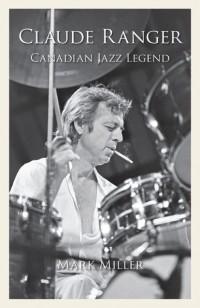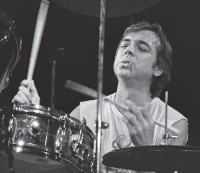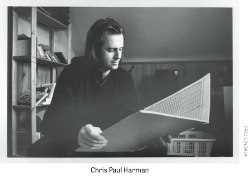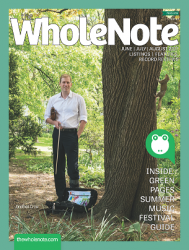Music and Health: Understanding Stage Fright
![]() Six years ago, famed soprano Ambur Braid was lying on her back on the dressing room floor at Toronto’s Four Seasons Centre. She was already made up and attired in her regal black costume for her Canadian Opera Company public debut as the Queen of the Night in Mozart’s The Magic Flute. She was trying to ground herself on the hard surface, but was failing miserably. Her stomach was queasy, her heart was racing, and her mouth was bone dry. Worse than the physical symptoms was the terrifying thought that she’d forget her lines. “I can’t do this,” she told herself. “I’d rather get hit by a bus.”
Six years ago, famed soprano Ambur Braid was lying on her back on the dressing room floor at Toronto’s Four Seasons Centre. She was already made up and attired in her regal black costume for her Canadian Opera Company public debut as the Queen of the Night in Mozart’s The Magic Flute. She was trying to ground herself on the hard surface, but was failing miserably. Her stomach was queasy, her heart was racing, and her mouth was bone dry. Worse than the physical symptoms was the terrifying thought that she’d forget her lines. “I can’t do this,” she told herself. “I’d rather get hit by a bus.”
Braid has no memory of how she survived that performance. But she knows it went well. “Thank goodness it always works out in the end,” she says.
 Stage fright is nothing new for the Canadian singing sensation. She’s grappled with performance anxiety all her life. It’s worse prior to opening nights, and when her mentors are in the audience. “I get anxious because I don’t want to disappoint anyone – meeting their expectations matters a lot to me.” And even though her performances have earned rave reviews from critics, her fears have exacted a steep price. At times they’ve caused insomnia, weight loss, and even infections like bronchitis. “I get into a tizzy and that morphs into illness,” she says.
Stage fright is nothing new for the Canadian singing sensation. She’s grappled with performance anxiety all her life. It’s worse prior to opening nights, and when her mentors are in the audience. “I get anxious because I don’t want to disappoint anyone – meeting their expectations matters a lot to me.” And even though her performances have earned rave reviews from critics, her fears have exacted a steep price. At times they’ve caused insomnia, weight loss, and even infections like bronchitis. “I get into a tizzy and that morphs into illness,” she says.
I spoke with three experts on stage fright about the subject: Toronto psychologist Kate Hays, who specializes in performance anxiety; Lisa Chisholm, preparation and performance coach at Master Performing; and Chase McMurren, MD, medical director and psychotherapist at the Al and Malka Green Artists’ Health Centre at the Toronto Western Hospital. If there’s one thing they all agree on, it’s that Braid is not alone.
Estimates of stage fright prevalence vary, says Hays, from 16% to 75%. Part of the difficulty of narrowing down these numbers comes from the fact that not everyone with stage fright chooses to speak up about it. According to Chisholm, artists are expected to be tough – which means that many people afflicted with stage fright suffer silently. “If you feel nervous you think you either haven’t practised enough or your character is weak,” says Hays.
The wide range could also stem from differences in definition. It’s normal for a musician to fear an audience’s judgment. The body’s fight-or-flight system gets ramped up in response to the anxiety, causing hearts to thump, irregular breathing, sweaty palms, and trembling. But while a bit of excitement can give an edge to a performance, an exaggerated response can be debilitating.
“It’s hard to play the cello with sweaty fingers or sing when you’re so tense you can’t breathe properly,” says Chisholm.
While anyone can get stage fright, perfectionists (people with unrealistically high standards) are especially prone to the condition, says McMurren. Many artists believe that self-criticism is beneficial. “They think they’ll get lazy if they’re kind to themselves.”
Braid herself identifies as a perfectionist. “I dwell on mistakes that last an eighth of a second,” she says. She feels this self-castigation is necessary to improve. “You need to never be satisfied – there’s always something more you have to know.”
But far from being helpful, this negative self-talk can be harmful, says McMurren. Many artists are so hard on themselves that they procrastinate, putting off practising indefinitely. Even if the piece is near-flawless, perfectionists berate themselves for a single error. In extreme cases, their unattainable expectations can lead to anxiety or depression.
 Luckily, there is help for those afflicted with stage fright. Pop vocalist Kira May, who sings in the project Kira May, has grappled with social anxiety (fearing judgments from others). Stage fright was one its manifestations. She began writing songs at age 12, but would only sing when she was alone in her bedroom. As she grew up, she continued singing on her own, turning to the technique of looping, (layering her own voice on top of itself) to avoid collaboration. Jamming with musicians would trigger her worst symptoms – a racing heart, restricted breathing, and shakiness. She worried about disappointing them. “What if I hit a wrong note and they never want to play with me again?” She was so afraid of failing that she put off getting gigs. But after meeting her partner, who thrived on playing publicly, she decided it was time to face her fears.
Luckily, there is help for those afflicted with stage fright. Pop vocalist Kira May, who sings in the project Kira May, has grappled with social anxiety (fearing judgments from others). Stage fright was one its manifestations. She began writing songs at age 12, but would only sing when she was alone in her bedroom. As she grew up, she continued singing on her own, turning to the technique of looping, (layering her own voice on top of itself) to avoid collaboration. Jamming with musicians would trigger her worst symptoms – a racing heart, restricted breathing, and shakiness. She worried about disappointing them. “What if I hit a wrong note and they never want to play with me again?” She was so afraid of failing that she put off getting gigs. But after meeting her partner, who thrived on playing publicly, she decided it was time to face her fears.
According to Chisholm, there are three broad areas underlying performance anxiety that can be targeted. Some revved up performers need to reign in their runaway physiology so they can regain their focus. They also need to hone their craft to feel adequately prepared. Finally, mental preparation can help performers handle whatever happens.
For Chisholm’s clients, boosting self-confidence is an important aspect of combatting stage fright – for which techniques for things like efficient practice are crucial. Instead of playing an entire piece over and over for hours, drilling in the mistakes, Chisholm encourages musicians to try concentrating on the troublesome sections, figuring out where they mess up and why. “Am I sloppy? Are my two fingers going down at the same time at bar 3, making the A-sharp unclean?” Once you identify the problem, it’s easier to resolve it.
Varying the practice conditions also helps performers cope with the unknown, says McMurren. “The performance will likely be in a different context from the practice – if you don’t adapt you could be caught off guard,” he says. Rehearse on a new chair, perform standing up, or begin the score at a different place each time.
McMurren adds that it’s useful to rehearse performances mentally. “Imagine playing in front of an audience and them loving it,” he says. MRI scans have shown that practising positive guided imagery regularly boosts the growth of the hippocampus (an area associated with well-being). But musicians should visualize troubles as well as triumphs, says Hays. Imagine goofing up bar 156 and recovering from it at bar 157, she says. “It’s a way of handling the ‘what ifs’ that we all get into.”
First we have to dismantle the negative messages which weigh us down, McMurren explains. Cognitive behavior therapy, which debunks distorted thinking, can help replace punitive ideas with more compassionate ones. “Performers think if they’re not jerks to themselves they won’t make it,” he says. But in fact, a more accepting attitude towards oneself reduces anxiety. Recognizing that our worth extends beyond our art is also crucial, says McMurren. When artists find meaning in other areas of their lives, there’s less at stake during any given show.
Some musicians also take substances to cope with anxiety, McMurren continues. Alcohol can manage worry, while pot settles the nerves for some. But there are healthy alternatives. Deep breathing and progressive muscle relaxation calm the body. Beta-blockers, which slow down the heart, can also help, he says, but sometimes cause decreased libido and fatigue.
May benefitted from many of these techniques. She joined a cognitive behavior therapy (CBT)-based group at CAMH for clients with social anxiety. One of her assignments was to sing a cappella in front of the group. “It was horrifying,” she recalls. “I thought I did a terrible job.” But she was wrong. The group loved it. From this exercise May learned that her misgivings weren’t always correct. After completing the course, May began performing, but realized she still needed to lower her stress level. She became McMurren’s client.
May continued to challenge her dismal predictions with CBT. She planned coping strategies for disastrous situations. “It was comforting just to have a plan,” she says. She imagined crying in front of a producer, and realized that it wouldn’t be the end of the world. “I would just take a moment and recover.”
While May found these techniques effective, she felt frustrated at her slow progress. McMurren suggested an antidepressant to supplement the talk therapy. It changed her life. “Before it felt like I was walking around in the rain and every droplet felt like a bullet – now I have a raincoat on so the water bounces off me.”
Feeling more resilient, May was able to find meaning in other areas of life besides singing. “I had put so much weight on music that it was impossible not to fear failing,” she says. But McMurren pointed out that ‘Kira May the musician’ was only part of her identity. “He helped me see myself as a well-rounded person – I’m way more than just an artist,” she says. That realization lessened her dread of failure. Becoming whole had benefits beyond performance. “I’ve replaced a fear of people with a strong desire to connect with them,” she says. “I feel much happier overall.”
So does Braid. Over the years she has figured out how to manage her stage fright. A naturopath helped her eat the right foods, maintain an exercise routine, and get enough sleep. She’s also become less dependent on the opinions of others. “I used to get wrapped up in what other people thought – that was exhausting,” she says. Now she’s less fazed when she slips up. “I can laugh at things and not do them again.”
Today, Braid knows how to cope on performance days. She works off nervous energy with squats and push-ups and by dancing to the overture. “It gets my breath moving and puts me into a positive headspace,” she says. Her pooch, Walter, comes to her performances now and distracts her from worry. “Having to focus on something else is nice.”
But while her Queen of the Night role will always be nerve-wracking, most of her work these days is enjoyable. “The show I’m in right now is a riot,” she says. “It’s the most fun I’ve ever had onstage.”
Vivien Fellegi is a former family physician now working as a freelance medical journalist.







